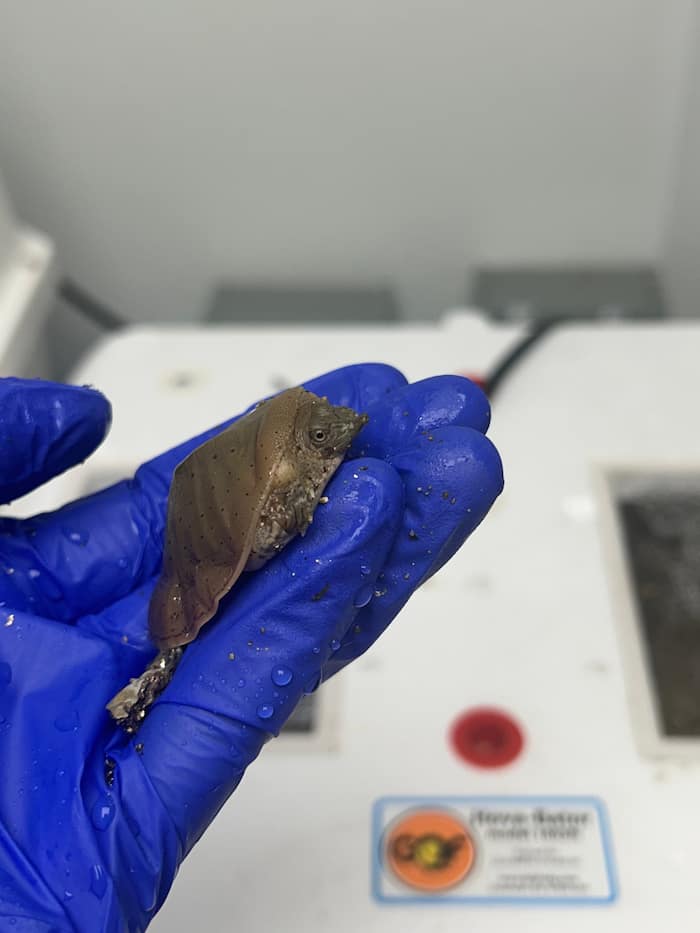The aquatic turtles that you see sunning themselves on logs in rivers and lakes during the warmer part of the year are all hibernating under water right now. They have burrowed themselves into the muddy bottoms of their native ponds and can remain there in their watery hideouts for many months. The cold-blooded turtles are taking advantage of the fact that water reaches its greatest possible density at 39 degrees Fahrenheit. This means that a microclimate exists in a body of water’s deepest area below the frost line. Water that is either warmer or colder than 39 degrees rises, leaving the densest water at the bottom. The steady temperature at the bottom ensures that the turtles do not freeze, nor will they get warm enough to require extra oxygen. In the meantime, their body metabolism has slowed to such an extent that their hearts may beat only a few times per hour. How do they breath? They have specialized tissues in their throats and their cloacas that, like the gills of fish, can be used to extract oxygen from water. Turtles are stimulated to come out of hibernation as the water temperature gradually rises in the spring.
To find out more about our native Illinois turtles, please visit the Department of Natural Resources’ website.




